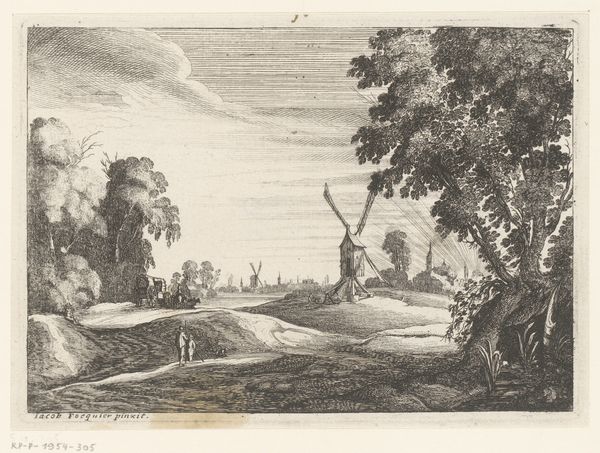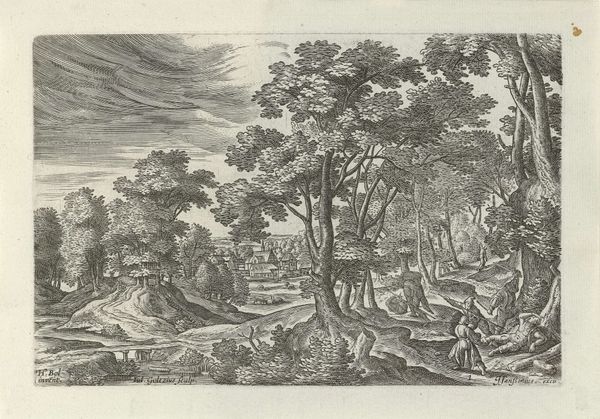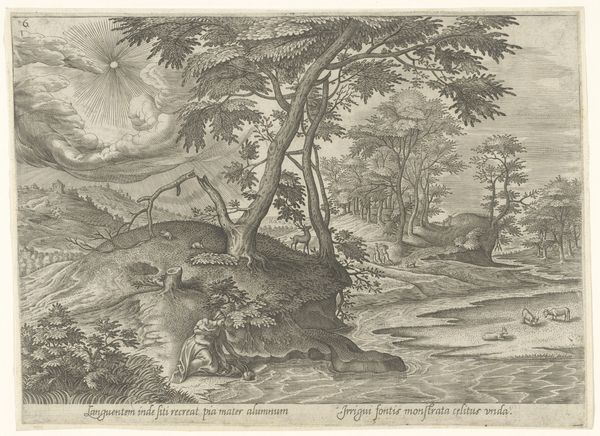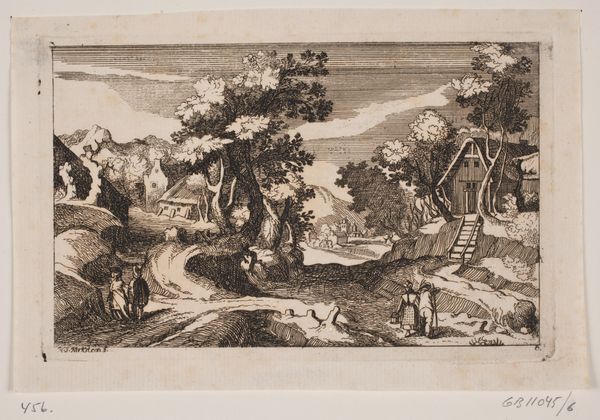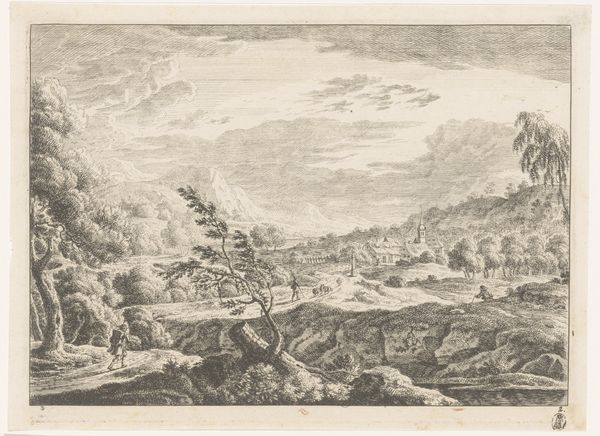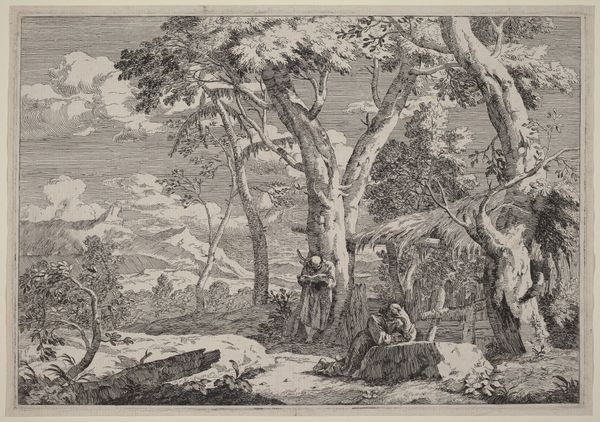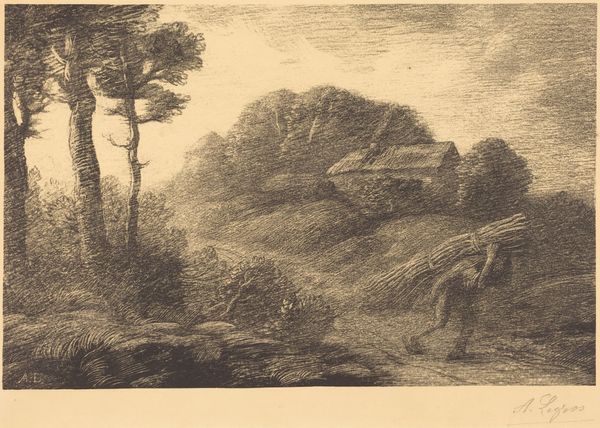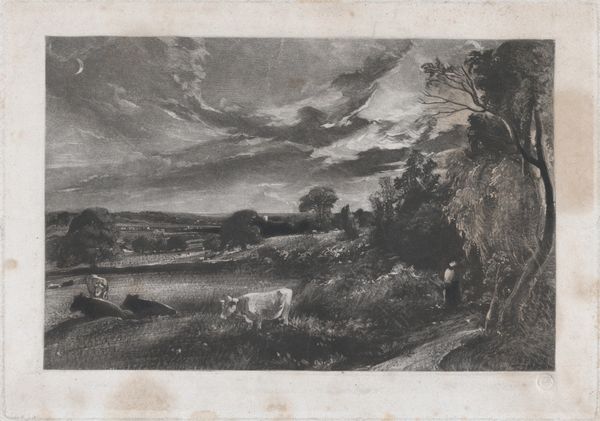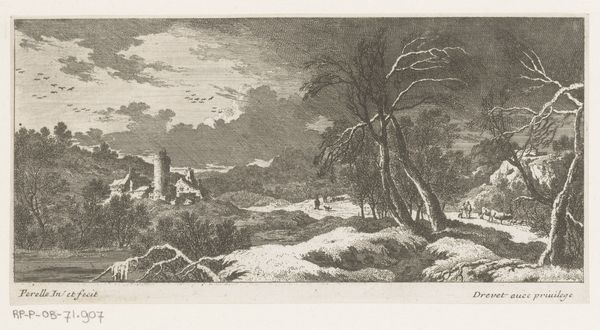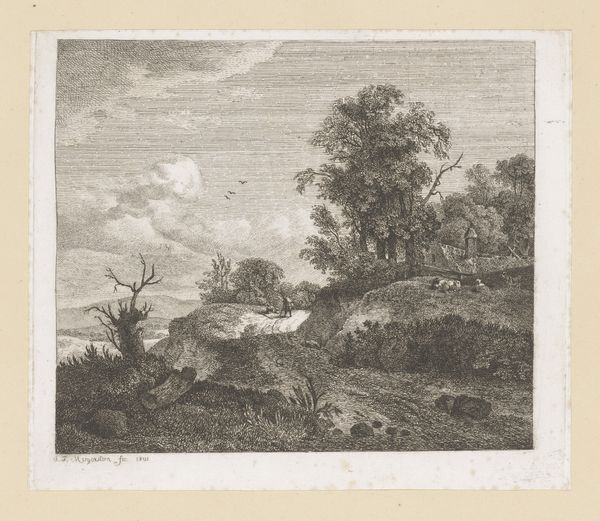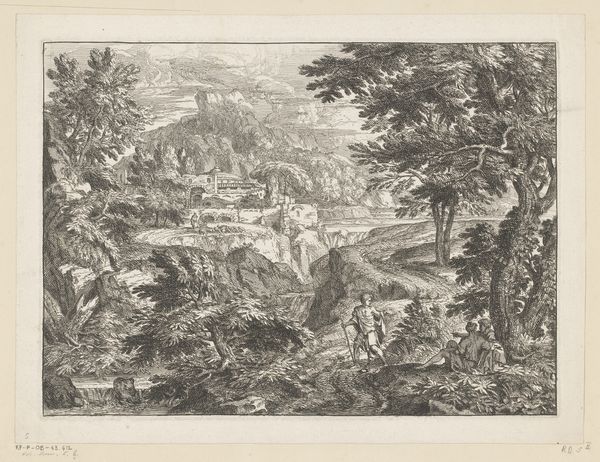
drawing, print, etching, engraving
#
drawing
# print
#
etching
#
landscape
#
figuration
#
engraving
Dimensions: Plate: 9 3/4 × 13 15/16 in. (24.7 × 35.4 cm) Sheet: 14 5/8 × 19 3/16 in. (37.1 × 48.7 cm)
Copyright: Public Domain
Curator: Davide Antonio Fossati created this engraving and etching titled "Plate 6: the Tempest" around 1743. What are your initial thoughts? Editor: Bleak! It really captures that feeling of impending doom before a storm, a kind of...visual anxiety. It's interesting how the artist manages to convey such drama with a seemingly simple landscape. Curator: Yes, the material handling enhances this dramatically, wouldn’t you agree? Fossati’s decision to combine engraving and etching, techniques rooted in replicability and craft, speaks volumes about the accessibility of landscape art in the 18th century. Note the distribution, catering to both elite and burgeoning middle-class art consumers. Editor: Indeed. The imagery pulls me in—I see a rural setting dominated by a fierce storm. Rain lashes down, trees bend in the wind, and there's a sense of nature's power overriding everything. The small figures on horseback appear almost insignificant. There's a certain biblical feeling to it, almost an allegory about mankind's frailty against the elements. Curator: Fascinating to note that these are, likely, idealized portrayals. It's quite common for landscape prints from this era to show scenes influenced by, yet diverging from, actual agricultural practices. We see this contrast between ideal and actual labor throughout landscape artwork designed to appeal to the consumer and middle classes. Editor: But beyond rural life, that looming castle suggests power too. A possible tension between natural and man-made forces, the enduring stone versus ephemeral weather. Is the artist perhaps suggesting a more lasting order underlying the storm? Is the storm a symbolic challenge to power structures? Curator: Or is it simply a product designed for sale? The artist, more than making a comment about society, is very intentionally producing the artwork for consumption, both in subject matter and cost of distribution via accessible means. Editor: True, yet consider how often the ' Tempest ' motif surfaces through art history, even now. Its symbolism of upheaval and renewal resonates across periods. I would push beyond simply the product aspect to consider cultural reverberation! Curator: You bring up a thought I had neglected in examining it thus. Editor: And likewise, you centered the process around which my considerations flow freely.
Comments
No comments
Be the first to comment and join the conversation on the ultimate creative platform.

